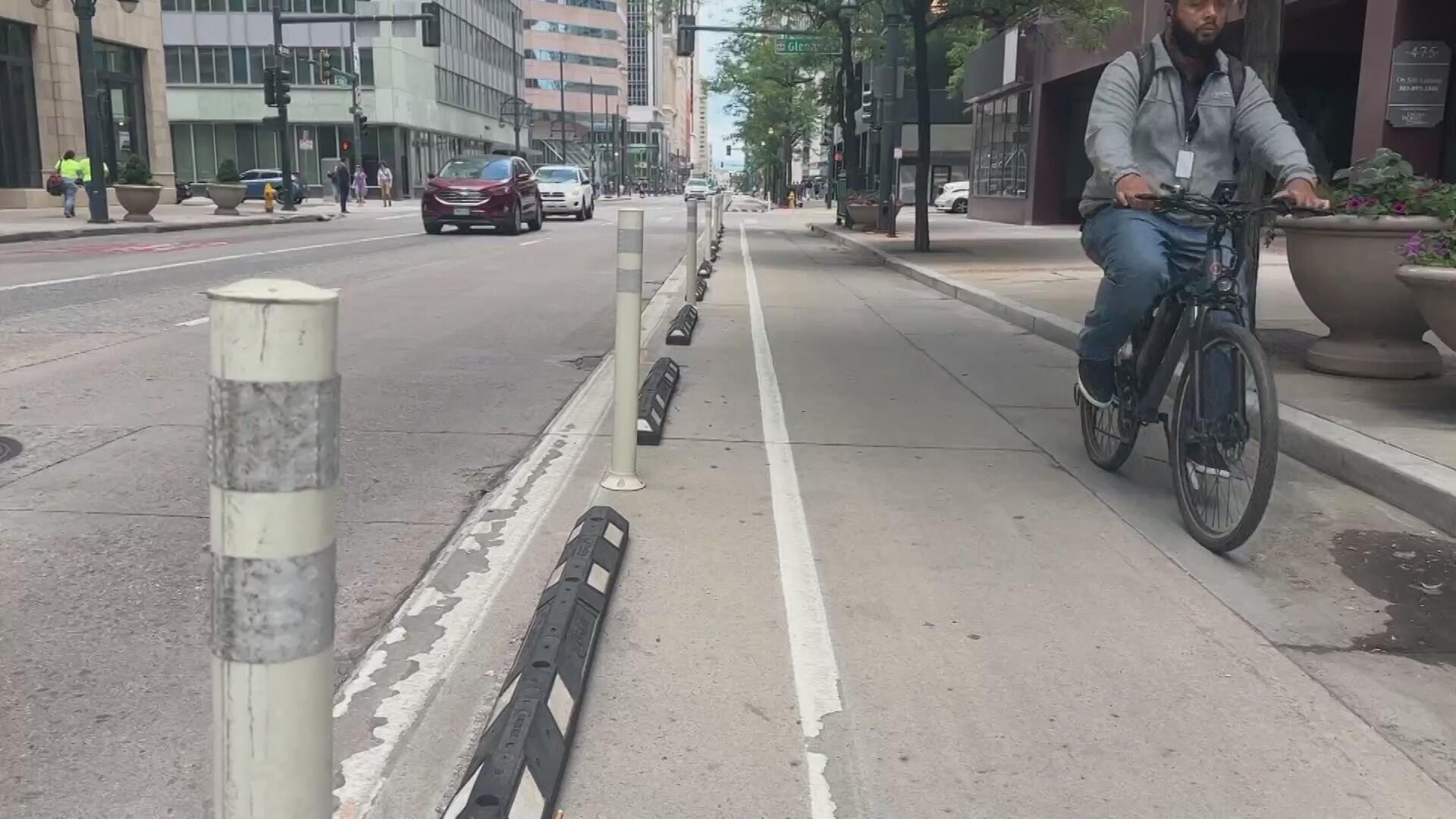Denver spends $200,000 to change protected bike lanes, biking community shares concerns
In recent weeks, changes in downtown Denver have been made to some protected bike lanes. Those lanes are meant to provide dedicated safe areas on the street for cyclists. Now, some of the vertical barriers have been changed, including those along the protected bike lane on Market Street.
The biking community said it's a safety concern and is more dangerous now. But the city said the changes were made for several reasons.
The City Department of Transportation and Infrastructure, otherwise known as DOTI, said they removed several of the vertical barriers on corridors and replaced them with travel lane dividers. They added that travel lane dividers on the ground are easier to maintain because the vertical barriers kept falling. They also mentioned that the travel lane dividers are sturdier, reducing maintenance and replacement needs.
For June Churchill, biking is her ideal mode of transportation to get around the city.
"Biking is just a way some people get around, and it's just a way of life," said Churchill.
She's also the budget chair of the DOTI Advisory Board and often rides in protected bike lanes, where she said the vertical barriers help bikers feel safer by providing separation.
"It's safety, anyone who bikes knows that outside of a nice, protected bike lane or a trail, it is dangerous," said Churchill.
Bikers are now concerned that many of those barriers have been removed. DOTI just finished installing the protected bike lane and barriers last fall along Market Street.
"We had to plan for and study and implement this, these bike lanes in downtown for years. It has taken years to study and plan and implement the vertical protection for these bike lanes, making them more accessible, making them safer," said Aylene McCallum, who co-chairs the DOTI Advisory Board.
McCallum pushed for protected bike lanes to be built, which bikers wanted, to feel safer. Now she believes this is a step in the wrong direction.
"They're looking for safe infrastructure to help them feel safe enough to use it. If the vertical separation is not there on a protected bike lane, it's more likely that people won't use it," said McCallum.
DOTI said they were also hearing concerns about "visual clutter." Since the changes, they say sight lines have also opened, making corridors less visually impacted.
The city said they spent about $200,000 on the changes, using money set aside for "neighborhood transportation and calming."
"It eats up valuable dollars that could be spent to make biking a better experience," said Churchill, who feels like bike lanes were downgraded without any input, and she hopes for more transparency moving forward.
"Removing the vertical protection from these bike lanes is absolutely a step backwards for bicycling," said McCallum. "If this isn't the right answer for everyone, then let's have an open and honest conversation about what might be a better answer, but let's keep our bicyclists safe before we remove it."
The city said they're working on coming up with different ways and strategies to improve biking, and have kept vertical barriers in busy areas and intersections.







